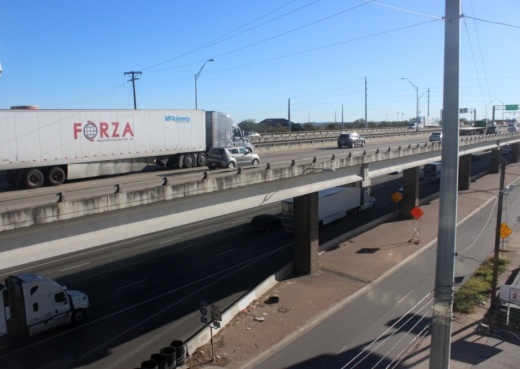One window for the public to comment opened in the fall. The second is open now and closes April 9. Comments can be submitted at this link.
There will be more working group meetings, including one set for April 15 that is open to all community members, and other opportunities for public engagement before TxDOT chooses its design around fall 2022. However, after April 9, there will be no further opportunities for those comments to be part of the official public record.
During its first virtual public scoping meeting, TxDOT received more than 2,300 comments. Staffers said they have made changes between the fall and now based on that feedback. These include adding the possibility for locally funded, bus-only lanes from the highway connecting to cross-streets, such as Riverside Drive or Dean Keeton Street, as well as evaluating the highway design for its ability to accommodate public parks or boulevards on top of tunneled lanes, which is called a "cap-and-stitch" project.
However, many transportation advocates, city leaders and community members have said that the project as it currently exists will not get Austin to where it needs to be.
Jay Blazek Crossley, executive director of Farm & City, a transportation nonprofit and think tank, described the three alternatives TxDOT has presented as "three different lipsticks on a pig," which he claimed only serve to reinforce the barrier I-35 has long been in the city, not to chisel away at it.
"I think it's still possible to get toward a much better project by the summer. But I'm also so disappointed and terrified that as of now, as of this moment—to think, officially, [that TxDOT is] not willing to entertain meaningfully different overall scenarios, and that's just crushing," Crossley said. "It's the last gasp of an old, failed system, and the people of Austin are going to have to pay the price of the 20th-century freeway-building regime crumbling."
While TxDOT is still making decisions about the highway's design, some choices have been made. First, TxDOT has to build a road—it cannot replace vehicle lanes with transit. Second, Gov. Greg Abbott and Lt. Gov. Dan Patrick have declared that the state will pursue a "non-tolled environment" for TxDOT road projects, which means that instead of managing traffic through tolls, the state is planning to add high-occupancy vehicle lanes to I-35 for public transit, carpools, vanpools and emergency vehicles.
Susan Fraser, TxDOT's program manager for the project, said those lanes are intended to cut down on the percentage of cars on I-35 with a single passenger.
"The HOV lanes are going to incentivize transit and people carpooling. That's going to encourage more people to drive together [and] provide more capacity on the highway," Fraser said.
All three conceptual designs would see the upper decks between Martin Luther King Jr. Boulevard and Airport Boulevard be brought down, and all three options would lower the mainlanes for the most urban stretch of the road, from Lady Bird Lake to Airport, either by tunneling them underground or depressing them below the crossings.
TxDOT is working to minimize the impact of the added lanes as much as possible. Texas Transportation Commission Chairman J. Bruce Bugg said in February 2020 that the state would commit to go "no wider and no higher" than they currently have planned.
However, local politicians, civic activists and community organizations are pushing TxDOT to go further. Various proposals, such as Reconnect Austin, Rethink 35 and a report from the Urban Land Institute, have suggested designs for the highway that would allow the city and other local partners to cover the depressed roadway with space it could reclaim for other uses, such as public parks or affordable housing, which would allow for neighborhood streets to be stitched back together.
The Our Future 35, a collection of more than 50 organizations in the Austin community formed to provide community input on the process, wrote a letter to TxDOT in December with a list of suggestions to "rectify longstanding disproportionate racial and economic impacts exacerbated by the original construction of 35."
"We definitely want to see this go deep, not wide," said Emily Risinger, planning and urban design manager for the Downtown Austin Alliance. "Intuitively, we know adding lanes hasn't solved traffic problems. We are interested in more innovative or forward-thinking solutions. I think there are a lot of ways to improve I-35 that doesn't widen it."





